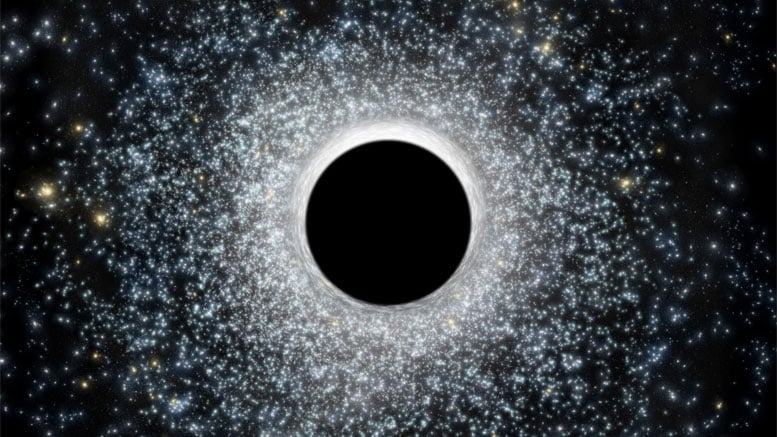Breakthrough Discovery of Intermediate-Mass Black Hole

A team of astronomers has made a significant breakthrough by identifying an intermediate-mass black hole (IMBH) located 4.3 million light-years away in the faint galaxy NGC 4395. Utilizing India’s largest optical telescope, the researchers found gas clouds orbiting the black hole at a distance of 125 light-minutes, moving at a velocity of 545 kilometers per second. This discovery enhances our understanding of how black holes, particularly those weighing between 100 and 100,000 solar masses, evolve and interact with their environments.
Unveiling the Cosmic Mystery of IMBHs
For years, astronomers have sought to uncover the elusive intermediate-mass black holes, which serve as a crucial link between stellar black holes and supermassive black holes. Stellar black holes typically have masses a few dozen times that of the Sun, while supermassive black holes can weigh millions to billions of solar masses. IMBHs are believed to be the seeds that grow into supermassive black holes, yet their faint nature and presence in small galaxies have made them challenging to observe. Unlike their larger counterparts, IMBHs do not emit bright signals unless they are actively consuming matter, necessitating advanced observational techniques for detection.
Advanced Techniques and Observations
The discovery was made possible through the efforts of a team led by Shivangi Pandey from the Aryabhatta Research Institute of Observational Sciences (ARIES). They employed the 3.6-meter Devasthal Optical Telescope (DOT) and its specialized spectrograph and camera, ADFOSC, along with the smaller 1.3-meter Devasthal Fast Optical Telescope (DFOT). The team monitored NGC 4395 continuously for two nights, applying a technique known as spectrophotometric reverberation mapping. This method measures the time delay between light emitted from the black hole’s accretion disk and the surrounding gas clouds, allowing researchers to determine the size of the region and estimate the black hole’s mass.
Significance of the Findings
The study revealed that the IMBH in NGC 4395 weighs approximately 22,000 times that of the Sun, making it one of the most accurately measured intermediate-mass black holes to date. The black hole is consuming matter at just 6% of its maximum theoretical rate. Published in the Astrophysical Journal, the research validates the size-luminosity relationship for black holes in low-luminosity active galaxies and provides a more precise mass estimate than previous studies. Dr. Suvendu Rakshit, a scientist at ARIES, emphasized that the search for more IMBHs is ongoing, and advancements in telescope technology will be crucial for future discoveries.
As technology continues to evolve, astronomers anticipate that future observations with larger telescopes and higher-resolution instruments will further illuminate the role of IMBHs in the cosmos, enhancing our understanding of their formation and influence on the universe.
Observer Voice is the one stop site for National, International news, Sports, Editor’s Choice, Art/culture contents, Quotes and much more. We also cover historical contents. Historical contents includes World History, Indian History, and what happened today. The website also covers Entertainment across the India and World.

